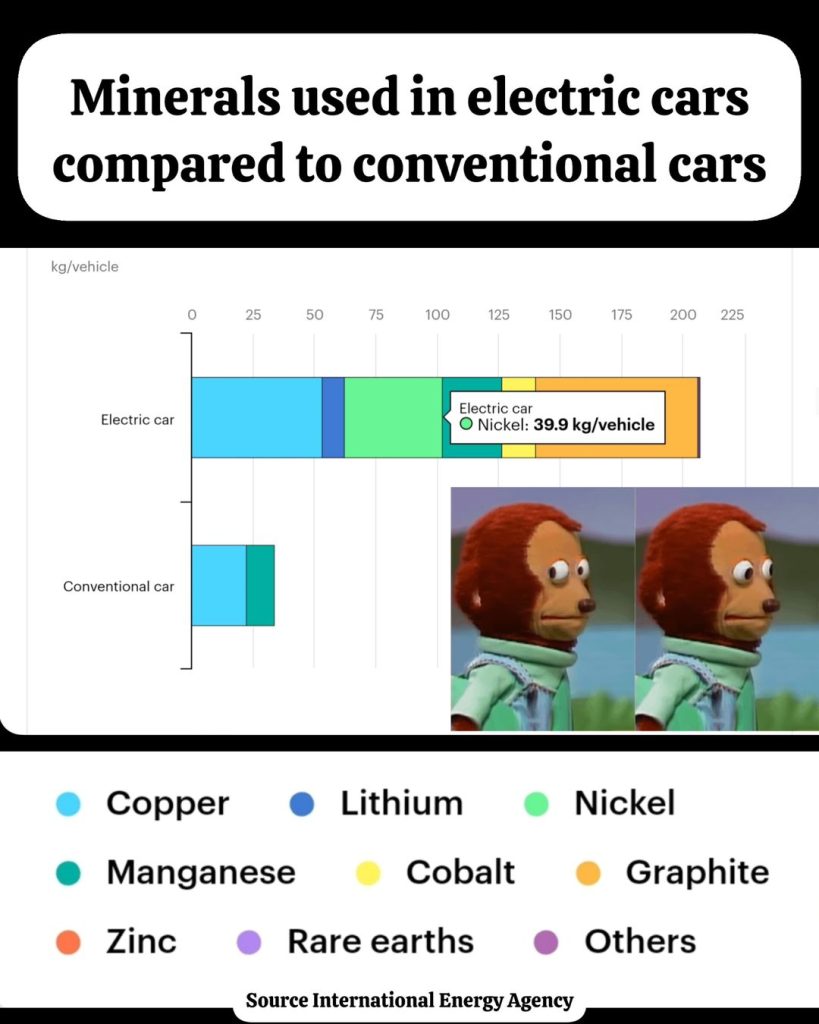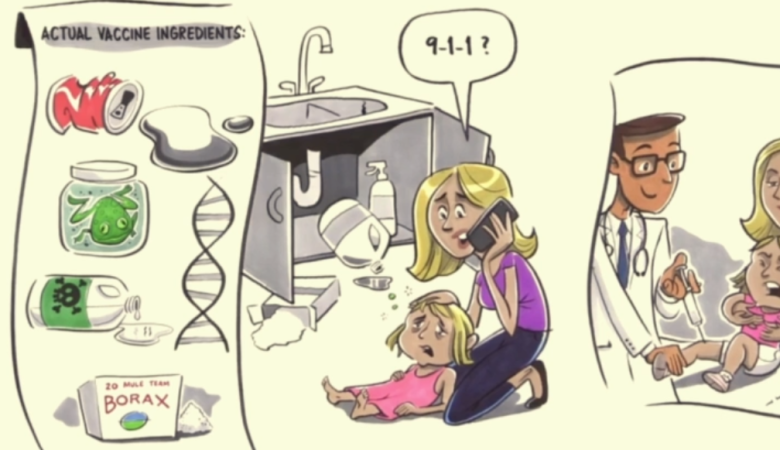As the world grapples with climate change and the need to reduce greenhouse gas emissions, the transition to renewable energy sources like wind, solar, and hydropower is gaining momentum.
Tesla has been the front-runner in the race for environmentally friendly EVs. However, this shift to cleaner energy will require vast amounts of minerals, to produce batteries. Many of these are currently obtained through mining, which can have significant environmental and social impacts.
These minerals will need to be extracted, processed, and manufactured into batteries and magnets to power electric vehicles, among other applications. With the amount of mining and manufacturing involved in producing these components, there is a growing debate over whether Tesla electric vehicles are truly cleaner than their gas-powered counterparts.
This post will examine this issue in-depth and explore the research done in the field in terms of Tesla battery production and carbon footprints.

How Tesla Battery Production Is Causing Pollution?
It is a widely discussed topic that the production of electric car batteries, such as those used in Tesla vehicles, can have a significant carbon footprint. In fact, it has been reported that the production of an electric car battery can release as much CO2 emissions as driving a gasoline-powered car for 8 years.
And that is just the battery, not the rest of the car.
This is largely due to the fact that the production of electric car batteries requires the mining and processing of materials such as lithium, cobalt, and nickel. These materials are often extracted through energy-intensive processes, and the manufacturing process itself requires significant amounts of energy.
Moreover, the transportation of these materials and the finished batteries also contributes to the carbon footprint. It is important to note, however, that the carbon emissions associated with the production of electric car batteries vary depending on the specific materials and manufacturing processes used.
Despite the carbon emissions associated with the production of electric car batteries, it is important to consider the larger picture. Once the batteries are manufactured and the electric vehicles are in use, they emit far fewer greenhouse gases than gasoline-powered cars. In fact, electric cars produce zero emissions while driving, assuming the electricity used to charge the vehicle comes from renewable sources.
Research
The IVL Swedish Environmental Research Institute report found that roughly half of the emissions associated with the production of lithium-ion batteries come from the production of raw materials, while the other half comes from the battery factories. Interestingly, the report also found that mining activities account for a relatively small proportion of the emissions, typically between 10-20 percent.
However, it’s important to note that these figures are based on the assumption that the electricity mix used in the battery factory consists of more than half of fossil fuels.
In Sweden, where the study was conducted, electricity production is mainly derived from a combination of fossil-nuclear and hydropower sources, which results in lower emissions than if fossil fuels alone were used. These findings highlight the importance of using renewable energy sources in the manufacturing process to reduce the overall carbon footprint of lithium-ion batteries.
A key finding of the IVL Swedish Environmental Research Institute report was that the carbon footprint of lithium-ion batteries is largely influenced by the electricity mix used in their production.
If the electricity used in the manufacturing process comes from renewable sources, the carbon footprint of the battery is significantly lower. The report also found that the size of the battery has a significant impact on its carbon footprint. Larger batteries, such as those used in Tesla vehicles, have a higher carbon footprint than smaller batteries, such as those used in the Nissan Leaf.
Despite the high carbon footprint of battery production, the report concludes that electric vehicles are still significantly better for the environment than gasoline-powered cars over the entire life cycle.
The report also emphasizes the importance of recycling and reusing batteries to further reduce the environmental impact of lithium-ion batteries.
Mining & Toxic Waste Management
As the world turns to renewable energy, it’s clear that mining and processing innovations will be critical to reducing waste and toxicity. In a recent journal article, researchers from Australia’s University of Queensland highlighted the pressing need for such innovations, as they predicted nearly one trillion tons of waste generated by copper, nickel, manganese, and lithium extraction over the next 30 years.
Fortunately, the researchers also outlined a number of potential solutions to reduce mining waste and toxicity. One promising approach is reprocessing waste rock and tailings to extract residual amounts of valuable minerals. Another is a process called environmental desulphurization, which separates sulfide minerals to reduce the toxicity of tailings. By implementing these and other innovative approaches, it may be possible to dramatically reduce the environmental impact of mining and help pave the way for a sustainable future.
Is Tesla Battery Manufacturing Causing More Emission Than ICE Vehicles?
It is unlikely that Tesla battery manufacturing is causing more emissions than internal combustion engine (ICE) vehicles. In fact, studies have shown that the production of electric vehicles (EVs) including battery manufacturing, has a lower carbon footprint compared to the production of ICE vehicles.
While the production of electric vehicle batteries does require the use of some energy-intensive materials and processes, such as the mining and refining of metals and manufacturing of the cells, studies have found that the emissions generated during the production process are offset by the lower emissions of the vehicles during their lifetime. This is because EVs produce no tailpipe emissions and can be powered by renewable energy sources like wind and solar power.
Tesla has made significant efforts to reduce the carbon footprint of its battery production process. For example, the company sources renewable energy to power its factories and has implemented innovative recycling techniques to reduce waste and reuse materials.
Life cycle analyses (L.C.A.s) have been instrumental in determining the environmental costs associated with the trade-off between electric vehicles and gasoline-powered vehicles. These analyses compare the amount of greenhouse gases produced during the production, use, and disposal of each type of vehicle, providing a comprehensive view of their total environmental impact.
Trade organizations and universities alike have conducted such analyses to better understand the trade-offs involved in transitioning to electric vehicles. The good news is that these studies have found that while the production of a battery electric vehicle (B.E.V.) may create more pollution than its gasoline-powered counterpart, this difference is ultimately erased once the vehicle is driven.
Why Carbon Footprint of an EV Is Important?
It is important to consider the carbon footprint of a vehicle beyond just its use on the road. Even before a car is purchased, emissions are generated during its production, transportation, and disposal.
According to some estimates, the production of a mid-size car can generate approximately 5.3 tons of carbon dioxide emissions, while the production of a large SUV can generate up to 17.5 tons of carbon dioxide emissions.
To put these numbers in perspective, it can be helpful to compare them to other sources of carbon emissions. For example, a round-trip flight for one person from Stockholm to New York can generate over 600 kilograms of carbon dioxide emissions, according to calculations by the International Civil Aviation Organization (ICAO).
These comparisons highlight the fact that reducing carbon emissions is a complex issue that involves many different sectors, including transportation, manufacturing, and energy production.
Is Tesla All Wrong in Making Electric Vehicles?
Many people criticize Tesla’s electric vehicles because they believe that the electricity used to power them is made only from coal, which creates a lot of pollution. They also worry about the pollution created by making the batteries for the Tesla cars and how long the batteries will last.
A study from the University of Munich found that a Mercedes diesel car created less pollution than a Tesla Model 3 electric car.
Some experts, like Professor Michael Kelly from Cambridge University, believe that if too many people start charging their electric cars, it could cause power outages. He also thinks that there isn’t enough material to make enough batteries for everyone who wants an electric car.
The environmental impact of transportation has become a pressing issue in recent years as the world faces the dire consequences of climate change. As a result, researchers and policymakers are increasingly turning to electric vehicles as a way to reduce greenhouse gas emissions.
And according to multiple studies, this switch appears to be justified. When comparing the total lifecycle emissions of internal combustion engine vehicles and electric vehicles, the latter comes out ahead.
Even though the process of mining the materials for EV batteries can generate substantial carbon dioxide emissions, the direct emissions from driving an internal combustion engine vehicle far outweigh the total emissions from an EV over its entire lifespan.
According to research carried out by the University of Michigan, funded by the Ford Motor Company, the pollution balance reaches equilibrium within 1.4 to 1.5 years for EV sedans, 1.6 to 1.9 years for EV SUVs, and somewhere around 1.6 years for electric pickup trucks, based on the mean number of miles travelled by electric vehicles in the United States.
While there may be some emissions associated with the manufacturing of Tesla batteries, it is unlikely that they are causing more emissions than ICE vehicles, and EVs remain a more environmentally friendly transportation option.
Assessing the Environmental Impact of EVs
The study referenced in the statement has revealed some interesting insights into the emissions associated with electric vehicle (EV) batteries. One key finding was that emissions tend to increase linearly with the size of the battery. This means that larger batteries, such as those found in Tesla vehicles, contribute more to emissions than smaller ones like the Nissan Leaf.
The study’s results have surprised Mia Romare, suggesting that the findings may challenge prevailing assumptions about the environmental impact of EVs. While EVs are generally considered to be more environmentally friendly than traditional internal combustion engine vehicles, the study suggests that the size of the battery should be considered when evaluating their overall environmental impact.
But it’s time to set the record straight!
Many people have been spreading misinformation about electric vehicles, but the truth is that electric car batteries will last much longer than you think. Auke Hoekstra, director of energy transition research at the Eindhoven University of Technology, states in a 2020 paper that electric vehicle batteries will most likely last for over 500,000 kilometres or 310,000 miles.
That’s more than enough for the average driver to use their car for many years without worrying about replacing the battery.
Key Findings and Future of Battery Technology
Furthermore, recent research has shown that gasoline and diesel pollute much more than we previously thought. By driving an electric vehicle, you’re not only saving money on gas, but you’re also contributing to a cleaner and healthier environment.
The energy needed to create Tesla batteries has already decreased, and the production of electricity from renewable sources is rapidly growing. This means that Tesla electric vehicles are becoming even more environmentally friendly over time.
Don’t believe the naysayers – switch to an electric vehicle and help make the world a better place for everyone!
Bottomline
According to Auke Hoekstra, director of energy transition research at the Eindhoven University of Technology, all the negative views about B.E.V.s will soon disappear. As battery production gets cleaner and electricity generation moves towards renewable sources, the lifetime of a vehicle will increase.
Mr. Hoekstra is confident that no country in the world has B.E.V.s that pollute more than internal combustion engines, and he is certain that the electrical generating mix in the United States will become less polluting in the future.
Here’s some good news!
That greenhouse-gas emission difference between electric vehicles and gasoline-powered vehicles is actually erased once you start driving the vehicle. And the best part?
The change is not going to take very long at all.
So, if you’re thinking about making the switch to an electric vehicle, you can feel good knowing that you’ll be making a positive impact on the environment in a relatively short amount of time.





Recent Comments